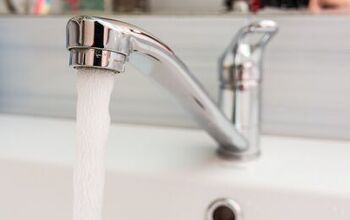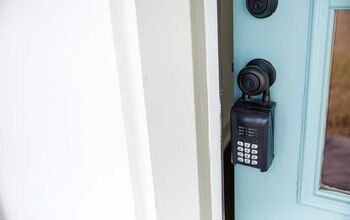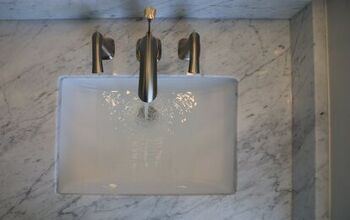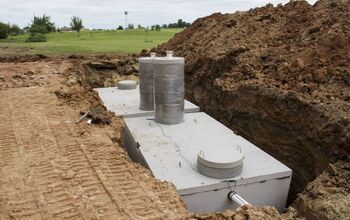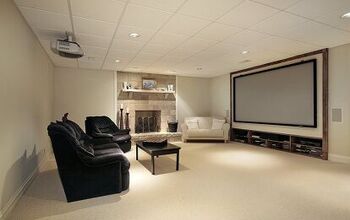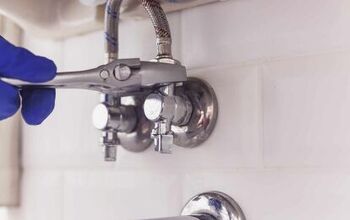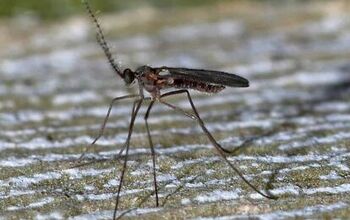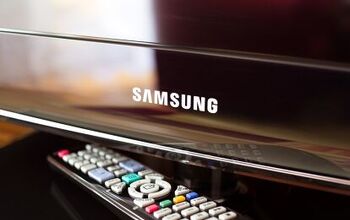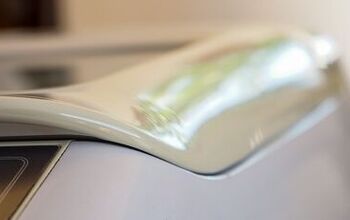Nine Signs You Need A New Grill

As spring approaches, the best grilling seasons get closer and closer by the day. Grilling outside is one of the best ways to enjoy your outdoor space in the warmer months. But after a long winter, your grill might not look as nice as when you last used it in the fall. You may even wonder if it’s time to get rid of your old grill and buy a new one.
Some signs it’s time to buy a new grill include excessive rust on the grill, cracked hoses, and accessories or an igniter no longer functioning. If your grill has yellow flames instead of blue, never gets hot enough, or cooks unevenly, consider buying a new one. Consistent maintenance, covering your grill, and storing it somewhere protected in the winter are all ways to increase a grill’s lifespan.
Whether you’ve had your grill for a long time, or you notice it isn’t cooking food quite as well as it used to, it’s important to know when to say goodbye to a grill. This outdoor cooking appliance should always be operating properly, especially as peak barbecue season approaches. This is why it’s so important to know all the different signs that it’s time to buy a new grill.
Nine Signs That It’s Time To Buy A New Grill
1. Flaking Rust On Interior Or Exterior
One of the most striking visual signs that it’s time to buy a new grill is rust. Since most grills are predominantly made of metal and stored outside, rust is inevitable. The amount and severity of the rust is what dictates whether or not it’s time for a new grill.
If you can wipe away the rust with a thorough cleaning, then your grill should be fine for another season. If the rust is flaking off and causing parts of the grill to grow weak and fall apart, then it’s time to get a new grill.
2. Noticeable Warping Or Lopsidedness
Rust and other and other forms of weather damage can cause your grill to lose its shape. If your grill is tilted to one side, or it is warped in some way, then it’s probably time for a new one. A warped or lopsided grill isn’t going to function as well as a straight-standing and fully functional one.
3. More Yellow Flames Than Blue Ones
Another visual sign that your grill isn’t functioning correctly and may need replacing is the color of the flames. When turned on, the base and the majority of the flames in your gas grill should be blue. Blue represents high heat.
If your flames are mostly yellow, then you probably have a problem. It means gas isn’t coming out properly, or there’s some other issue that’s preventing your grill from heating to its full potential.
4. It isn’t Holding Heat Like It Used To
Sometimes you may not notice anything visually wrong with the grill, but instead, you may notice it isn’t working quite right. One major red flag that your grill has passed its prime is when it can’t hold heat.
A grill has a hot flame, but the hood of a grill must trap this heat to maintain a high grilling temperature. If your grill struggles to stay at high temperatures, even when there is plenty of gas in the propane tank, then there’s a bigger issue. Sometimes the issue can be fixed, but in other cases, it’s a better decision to just get a new grill.
5. Your Food Isn’t Cooking Evenly
Over time, some grills start to develop hot spots and cool spots. If your grill begins to cook very unevenly, to the degree that it’s affecting food quality, then it may be time to get rid of it.
When you can’t properly cook food due to an extremely uneven temperature on the grill surface, you may end up botching expensive cuts of meat. Poorly cooked prime cuts of meat should be reason enough to solve the problem or get a new grill.
6. Hoses Are Cracked Or Damaged
If your grill hoses are cracked, they should be replaced. Sometimes, however, it can cost more than it's worth to repair all the hoses on a grill. If your grill is old and needs new hoses, consider costing out the repair. It might be wiser to get a new grill than repair an old one.
7. The Side Burner Or Igniter Doesn’t Work
Most gas grills come with an igniter, and larger modern ones even come with a side burner. The side burner is great for cooking when you have no electricity, and can be a real asset. If the igniter, side burner, or other grill features no longer work, then you may want to think about budgeting for a new grill.
8. The Food Tastes ‘Off’
Sometimes you need to trust your senses. If your food tastes off, there’s a chance an old grill is to blame. It could be a rusty or dirty grill, or perhaps layers of filth that collect over time. Either way, if everything you grill starts tasting off, then it may be time for a new one.
9. It Never Gets Hot Enough
One last sign that you need to get rid of your old grill is when, no matter how high you turn the heat, it never gets hot enough. If you have a full tank of gas and the grill can’t even get hot enough to char a piece of meat, then you have a problem. Once a grill can’t properly grill, it must be replaced.
Five Ways To Increase Your Grill’s Lifespan
1. Perform Regular Maintenance And Detailing
One way to help your grill last much longer is to ensure you perform regular maintenance on it. Regularly clean the grill from top to bottom. You’ll be surprised how much longer a grill will stay looking great and rust-free if you wipe it down often.
In addition to wiping the grill down, remember to detail the harder-to-reach areas, including around the knobs, and underneath the grill grate. Ensure you perform grill maintenance after the winter, as well as before you store it during the off-season.
2. Cover Your Grill
One of the easiest and most effective ways to help your grill last longer is to use a grill cover. Covering your grill can easily add years to its life. This is particularly true if you live near the ocean or have your grill in a location where it can get wet.
Salt and moisture will quickly eat away at the metal on your grill. Covering it adds a protective layer that helps block much of the damage that external elements inflict on outdoor grills.
3. Store It Somewhere Safe In Winter
If you live somewhere with cold or long wet winters, then you probably aren’t grilling much in this season. Instead of leaving it outside and susceptible to the extreme winter weather, consider storing your grill in the garage or another sheltered location during the winter.
Covering and storing your grill somewhere safe can add years to its life, especially if you live somewhere with long and hard winters.
4. Clean It Thoroughly After Each Use
It’s easy to forget to clean your grill after you use it. You probably let the grill cool, enjoy your food, and then hours, or even days later, remember the grill is dirty. Do your best to get in the habit of cleaning your grill after each use.
A good scrubbing not only gets your grill ready for its next use, but it prevents decay and rust.
5. Buy A High-Quality Grill
Lastly, if you want your next grill to last longer than your current one, buy a higher-quality grill. Opt for brands and models that are built to last. Durable grills that are built to withstand the elements will last longer than cheap grills. If you buy a quality grill and follow the other tips above, your quality grill can easily last more than a decade before it shows noticeable signs of aging.
Summing Up Signs That You Need A New Grill
If you’re wondering whether or not you should get a new grill, several signs can help you make this decision. If your grill is rusted, or if the igniter or other accessories no longer function, then it may be time for a new grill. If there are cracked hoses, or if the flames are yellow instead of blue, this is another sign your grill has passed its prime. When the food you cook on the grill tastes off, cooks unevenly, or takes forever to cook, then it’s time for a new grill.
Related Guides:
- How To Winterize Your Grill
- How To Prepare Your Grill After Winter
- Can You Store A Grill In The Garage? (Find Out Now!)

Tom Gaffey is an expert writer who currently resides in Washington D.C. Tom has a passion for real estate and home improvement writing, as well as travel and lifestyle writing. He lived the last twelve years in Hawaii where he worked closely with luxury resorts and event planners, mastering his knowledge of aesthetics and luxury products. This is where he found his passion for home improvement and a keen interest in DIY projects. Currently, Tom resides in Washington D.C, and also working on his debut fiction novel.
More by Tom Gaffey

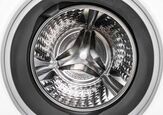
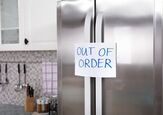









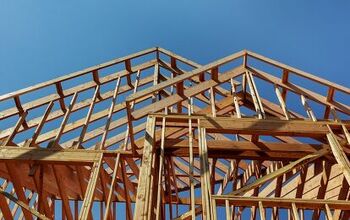
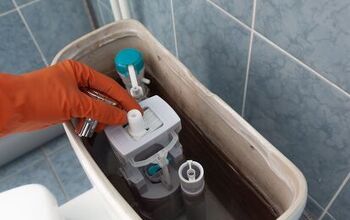
![10 Best Cordless Leaf Blowers – [2022 Reviews & Ultimate Guide]](https://cdn-fastly.upgradedhome.com/media/2023/07/31/9070789/10-best-cordless-leaf-blowers-2022-reviews-ultimate-guide.jpg?size=350x220)
